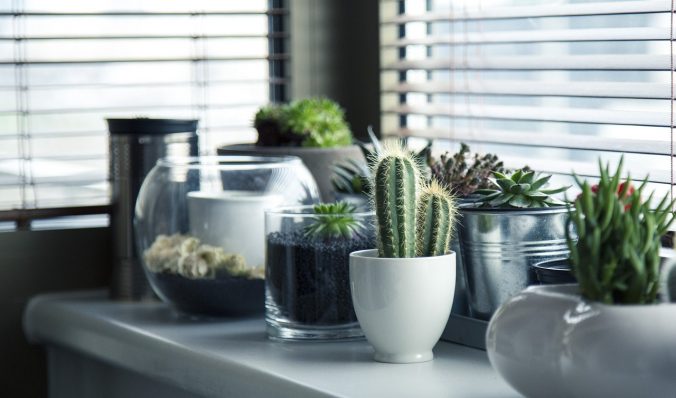When referring to food, succulent means tender or juicy. In relation to plants, the meaning is similar. This term defines a plant that uses its stems, leaves or both to store water. You can normally identify a succulent when it has leaves that appear fleshy and thick, but some do have narrower leaves.
Of course, cacti don’t necessarily come with leaves. However, cacti are only one type of this species. Other popular succulents include aloe, crown of thorns, agave, sedum, zebra plant, hens and chicks, and prickly pear.
Environment
As a whole, these plants come from different environments, not arid deserts. You can find them in steamy jungles, on cold mountains and even seaside cliffs. They can tolerate extended drought conditions, but they prefer bright light. However, this doesn’t necessarily mean that they want to bake under a full, hot sun. While many melt in freezing temperatures, some cold-hardy species can survive even Canadian winters outdoors.
Care
While these plants aren’t that demanding and live for decades with just infrequent watering, bright light and sporadic doses of all-purpose plant food, they can have problems with sap-sucking insects. In humid climates, they can burn when exposed to hot summer sun. If you place these plants in a south-facing window, a sheer curtain will help protect them. The foliage will look the best when the plants are maintained under excellent lighting conditions. Lack of light can lead to scrawny, leggy growth.
Water and Drainage
While water is vital to their survival, their capability to store nutrients and liquids makes them drought-hardy. When growing succulents at home, over-watering is their biggest enemy. This causes premature shedding of leaves as well as stem and root rot. You can avoid this by using soil that drains especially well. Soil that contains organic matter, coarse sand, and either grit or perlite work especially well.
Undesirable Color Changes
Lack of sunlight, insufficient water, and temperature extremes can cause color changes in succulents. When they have a dull appearance, they most likely don’t get enough sunlight. Color changes in normally green succulents that result in orange, purple, red, pink or even black tones denote shock, such as sudden temperature spikes or too much sunlight. This effect is called blushing.
Propagation
Propagating these plants is easy. Many of them have pups that you can cut off and root in a container with soil. Before planting, make sure to let any cuttings dry for at least 24 hours. This allows the cut to heal and decreases the chances of rotting.
Pups with longer stems root easier. Some varieties produce their new plants along flower stems or on the ends of their leaves. If a succulent drops a leaf, you can even try to grow a new plant by placing it into the appropriate soil.



Leave a Reply